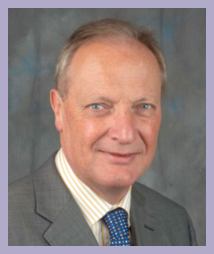
On Monday 16 March, the BOA launched the Getting It Right First Time (GIRFT) report. GIRFT was commissioned in 2013 by the Secretary of State for Health and NHS England and published with their agreement. Evidence-based and solutions-oriented, the GIRFT team used multiple sources to compile a unique data set for each NHS Hospital Trust in England that provides elective orthopaedic services and constructed comparative performance dashboards with the objective of benchmarking good practice. It also includes an important stocktake of rehabilitation services conducted by the Chartered Society of Physiotherapy (CSP) that flags up the patchwork quilt of provision encountered by patients across the country.
Each Trust received its dataset prior to a personal visit by the BOA President, then Professor Tim Briggs, who met with the Chief Executive, Medical Director and orthopaedic clinical team to discuss their data. This took the form of an unprecedented peer review that was both powerful and insightful precisely because it was evidence based, clinically led and highlighted variations. As a consequence a number of hospitals are already changing their orthopaedic practice and the BOA has identified a series of solutions that will enable the future delivery of a high quality, sustainable and affordable elective orthopaedic service for England that will be able to provide more and better care for patients.
The resultant change agenda is significant and will rely on determined leadership by clinicians standing shoulder to shoulder with NHS managers.
Precise details of the implementation plan for orthopaedics in England will become clearer over the next few months and in the meantime a similar programme of GIRFT visits has been completed for Wales and plans are in active development for Northern Ireland and Scotland.
GIRFT has been described by some as a snapshot, and by others as a study. It is neither. GIRFT is the initiator of what is likely to be an enduring patient-focused continuous improvement programme for orthopaedics: the dashboards have data feeds from HES, the National Joint Registry, the NHS Litigation Authority and many other sources. They will continue to be used as the evidence base with which to track and measure advances in orthopaedic performance. Moreover, because it uses the evidence base and peer review, the powerful GIRFT methodology has the potential to be applied to other specialties and disciplines in our NHS – as well as other health economies: we are in dialogue with the Chinese Orthopaedic Association and were invited to run a GIRFT related symposium at the recent congress of the American Academy of Orthopaedic Surgeons.
Nor are we pushing forward in isolation: it is the intention that the the GIRFT dashboards will complement the MSK metrics work being led by AR UK. In addition, the changes in orthopaedic practice should give CCGs increased assurance to commission elective services with confidence from NHS providers and avoid the destabilisation of trauma services that we have seen as a consequence of some recent MSK contracting decisions.
Last but by no means least, the CSP’s rehabilitation work has the potential to improve the framework of care for patients at a crucial stage of their pathway.

These are exciting times for MSK in general and T&O in particular. The GIRFT collaboration between the BOA and the CSP exemplifies the importance of ARMA as the glue that binds us as a community: it is a positive demonstration that close working within the Alliance can have real teeth and make a tangible difference for patients.
Mike Kimmons CB
Chief Executive
British Orthopaedic Association

